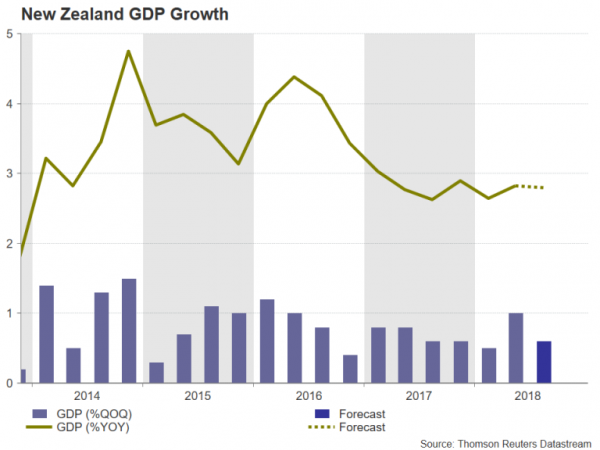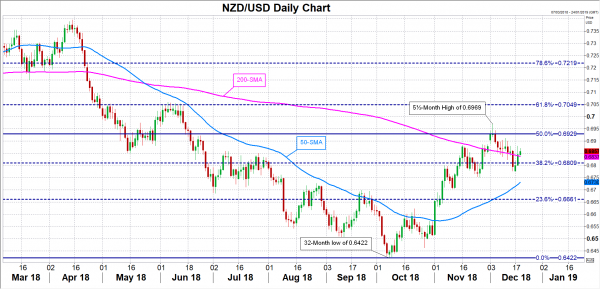New Zealand will be the last of the major advanced countries to publish its third quarter GDP estimates on Thursday local time (Wednesday, 21:45 GMT). The economy is expected to have cooled somewhat from the previous quarter. However, the local dollar has been in a bullish mood since October and could extend its latest upswing as business confidence recovers and the US dollar falls out of favour with investors.
After growing by a robust 1.0% in the second quarter, New Zealand’s economy is forecast to have expanded by a more moderate 0.6% quarter-on-quarter in the three months to September. Economic data for the period have been mostly positive with employment increasing far more strongly than expected and exports continuing to rise. But GDP growth was likely held back from flat retail sales during the quarter and a deterioration in the country’s terms of trade as import prices rose faster than export prices.
The Reserve Bank of New Zealand governor, Adrian Orr, signalled at the last policy meeting in November that a rate cut had not been taken off the table despite the economy performing better than anticipated in Q2. The central bank is concerned that the weakness in business confidence could prove a drag on growth and also sees downside risks to inflation. The annual rate of CPI picked up to 1.9% in the third quarter, but this is below the middle of the RBNZ’s 1-3% target band. Wage growth was also stuck below 2% in the third quarter.
However, there’s few indications so far in the fourth quarter that growth is slowing further. The closely-watched ANZ business confidence index rebounded sharply in December (though it remains in negative territory). In addition, dairy prices have been on the up in December after months of declines, boding well for New Zealand’s important dairy industry.
The positive trends, along with the easing in US-China trade tensions, have helped the New Zealand dollar recover from August’s 32-month low of $0.6422 set in early October. The kiwi has since appreciated by more than 6% versus the greenback and could gain further if the GDP numbers beat analysts’ expectations and/or the US currency posts a sharper pullback.
Kiwi bulls could initially target the 50% Fibonacci retracement of the February-October downleg from 0.7436 to 0.6422, at 0.6929. Not too far above this level is December’s 5½-month top of 0.6969, which if successfully challenged, would signal a resumption of the uptrend that began in October. Further up, resistance could come at the 61.8% Fibonacci at 0.7049.
However, a miss in the GDP figures could see the kiwi seeking support at the 38.2% Fibonacci retracement at 0.6809. A break below the 0.68 handle would open the way for the 50-day moving average at 0.6730, while further falls would turn the focus on the 23.6% Fibonacci at 0.6661.
















